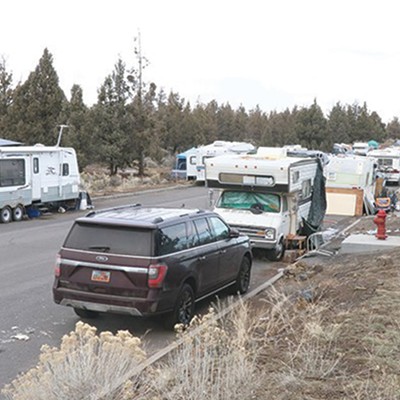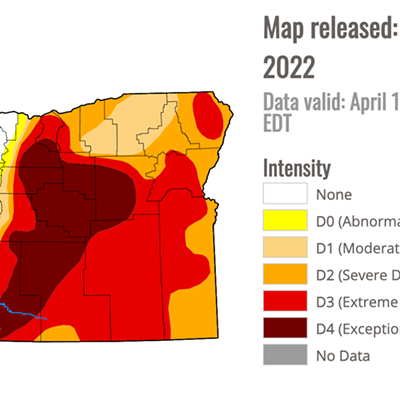This alligator lizard shown at right was serious about living up to its name as it tried to eat Caleb's finger. They met while we were exploring the Lava Beds National Monument back in the 1980s when my wife Sue and our kids were pursuing and tagging Monarch butterflies on the northern part of the monument. Oh, yes, it did eventually spit out Caleb's finger...but little did we know how aggressive that beautiful, ambitious lizard could be.
This little blurb about that well-named reptile is an attempt to pin down, and/or see if they live here in Central Oregon. I think I should have spotted one in this neck of the woods, but I may have missed them in all the years that have passed since I rolled into Bend on my Harley in 1951.
Local reptile expert Al St. John doesn't list them in his book, "Reptiles of the Northwest." LeeAnn Kriegh doesn't have them in her new book, "The Nature of Bend," and "The Atlas of Oregon Wildlife" is pretty vague, saying only that the lizard lives in Deschutes County. They're pretty hard to miss if you're really looking for them, and things are a-changin' thanks to climate change, so please let me know if you see one running around in your back-40 trying to eat one of your kids.
The alligator lizard clan was first classified in the 1830s by Arend Friedrich August Wiegmann, a German zoologist and herpetologist. In 1835 he founded, together with other scholars, a zoological periodical known as "Wiegmann's Archive."
Wiegmann specialized in classifying Mexican fish and herps, and in 1834 he published Herpetologia Mexicana, a monograph on the reptiles of Mexico. One of his discoveries from his Mexican travels, Weigman's alligator lizard, or Gerrhonotus liocephalus, is still on the books the way he described it.
But all the other alligator lizards found in the western U.S. have been renamed and reclassified for their coloring, habitat, geographic locations, opinions of herpetologists and other traits.
According to Al St. John's "Lone Pine Field Guide, Reptiles of The Northwest," he's listed the Oregon alligator lizard, the California alligator lizard and a bunch of others running around in California as separate species, such as the San Francisco, Sierra, Northwestern, Shasta, and five or six species of alligator lizards in Canada. And who knows who and what the alligator lizards are named that occur along the east side of the Sierra Nevada range.
While naming them is difficult, the diet of the alligator lizard is simple: whatever will fit into its mouth. That can be other smaller lizards and snakes, which are devoured as soon as they're spotted. A nice fat and juicy scarab beetle will also vanish down the lizard's gullet in the blink of an eye.
If the alligator lizard's an occupant of your kitchen garden you will never need to apply any pesticides; cabbage looper caterpillars will be gobbled up, along with flea beetles, corn borer caterpillars. squash bugs, cutworm larvae and other plant pests. If you have carpet beetles in your kitchen and want them to go away, hire an alligator lizard, give it free roaming privileges in your carpeted rooms and they'll remove your household pests. But be warned: It might bite your big toe in the process.
The fact is, alligator lizards are almost fearless when it comes to prey; mice and even a juvenile gopher will be grabbed and swallowed. But then, there's that old adage, "He who lives by the sword...." Alligator lizards are often caught and eaten by American Kestrels, who feed them to their babies. Plus, gopher snakes, whip snakes and the like will not hesitate to take an alligator lizard for a snack, or main meal.
The sex life of the alligator lizard is hard on the females because of the male's tendency to take possession of the female of his choice. During the spring breeding season, a male lizard grabs onto the head of a female with his tiny, needle-sharp teeth until she's ready to let him mate with her. They can remain attached this way for several hours, almost oblivious to their surroundings. Besides keeping her from running off to mate with another male, this probably shows her how strong and suitable a partner he is.
When all's said and done, the female will give birth to anywhere between four to 15 live young between June and September, and she'll keep them away from the "Old Man," just in case he think they're competition and begins to eat them. But keeping them safe from a marauding kestrel will be difficult to impossible...
The most surprising location I found alligator lizards was on the coast around the Oregon Museum of Science and Industry's Camp Arago near North Bend, where I suppose some hair-splitter has named them the Coastal or Cape Arago alligator lizard. They love hunting for prey behind the fore dunes where OMSI students watch them devouring beetles, grasshoppers and other inhabitants of the sandy soils. We watched one who was agile enough to hang onto vegetation with one leg while grasping butterflies, moths and honeybees as they sailed by close to the ground looking for flowering plants to nectar in.
The alligator lizard is also found at Hart Mountain, searching beneath and in the branches of big sagebrush, rabbitbrush and bunch grasses for beetles, scorpions, wolf spiders and other delicious ground-dwelling arthropods. In spite of many appearances around the state, I've never found an alligator lizard around Central Oregon. Maybe it's too cold in winter for them, perhaps our lizard-eating kestrels are too efficient and the lizards can't escape them, or I'm going blind. So, please go out and find one for me in the Trout Creek Natural Area, Camp Polk, around Smith Rock...or Al St. John's backyard.



























